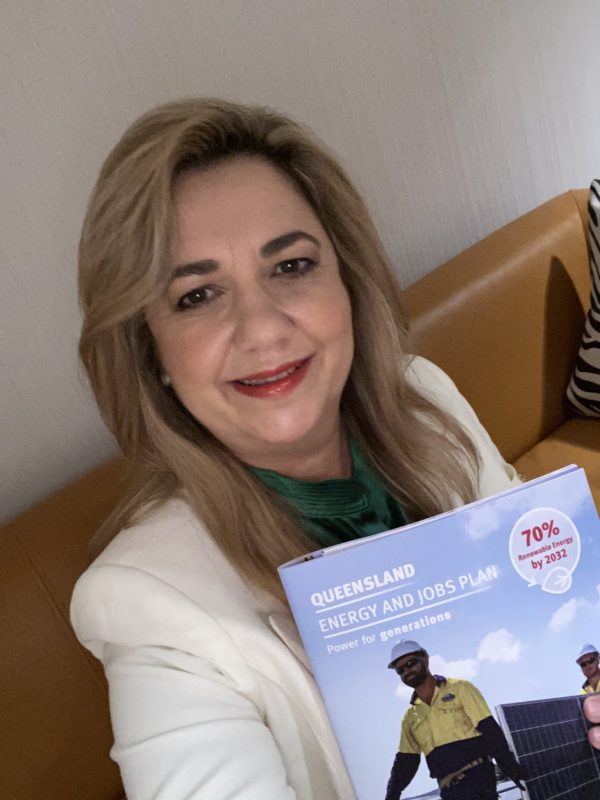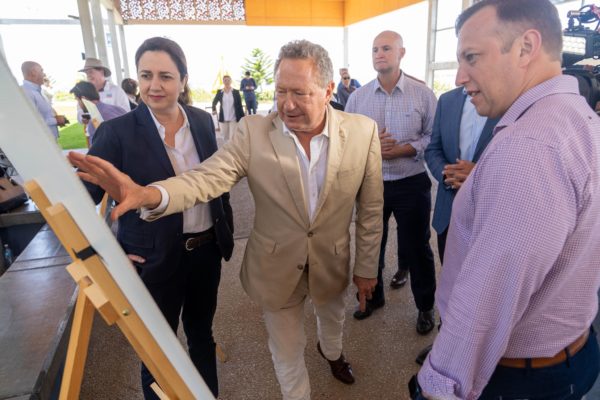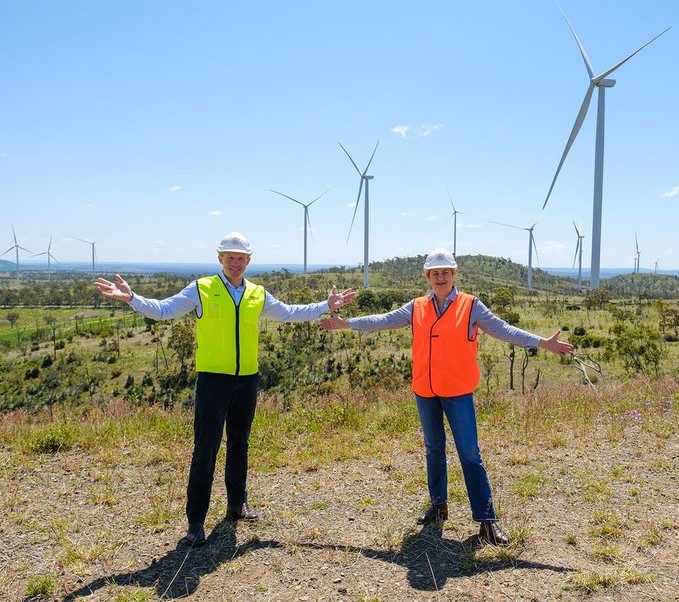The Queensland government is strategically leveraging its publicly owned energy assets to support local manufacturers as it transitions from coal to renewable energy.
Queensland Premier Annastacia Palaszczuk last week launched the state’s Energy and Jobs Plan – a massive change of pace for one of the country’s more conservative states and final coal holdouts.
With the plan, the state government announced it would be aiming to supply 70% of the state’s energy demands from renewables by 2032, and 80% by 2035.
It plans to reach these soon-to-be legislated targets by constructing what it’s calling the “Queensland SuperGrid” – an interconnected and massive fit out of solar, wind, battery and hydrogen generators.

Image: Twitter/ Annastacia Palaszczuk
Unlike New South Wales and Victoria, many of Queensland’s energy assets like power plants and transmission infrastructure are still publicly owned. The state is keen to leverage this ownership to give local manufacturing businesses a decisive leg up, since the government can control the supply chain through its role as a customer.
The government says its Queensland Energy and Jobs Plan – a 10-year vision for the state’s energy transformation – will command $62 billion (USD 40 billion) worth of public and private investment over the next 15 years. Enacting the plan, the government will follow what it’s calling a “Buy Queensland (Buy Qld)” approach.
“Our Queensland Energy and Jobs Plan and the Buy Qld procurement approach means the publicly owned power companies will work with businesses to seize this opportunity and build entire new manufacturing supply chains to deliver this transformational infrastructure,” Minister for Energy, Renewables and Hydrogen Mick de Brenni said.
The state estimates it will need more than 2,000 wind towers and nacelles, more than 7,000 wind tower blades, almost 25 million solar modules and nearly 7,000 batteries over the coming 13 years.
“We want to seize this opportunity by manufacturing as much of this renewable energy equipment as possible right here in Queensland,” Premier Annastacia Palaszczuk said.
“$62 billion means a step change investment in wind turbines, solar panels, batteries, pumped hydro equipment and transmission lines.
“And because so much of it will be procured by Queensland Government Owned Corporations, we get the chance to use our purchasing power to drive local manufacturing, which means even more local jobs.”
“Instead of importing the wind tower blades, we could be manufacturing them in Queensland and using them to build our SuperGrid and exporting them to the world,” Deputy Premier Steven Miles added.

Image: FFI
While this strategy seeks to use public funds to prioritise local supply chains, it’s important the private sector shares the vision. Fortescue Future Industries, headed up by Andrew ‘Twiggy” Forrest, is already constructing a 2 GW electrolyser manufacturing facility in Gladstone, Queensland – a plan that clearly has much state government involvement.
Interested businesses are being encouraged to register, with that information to be relayed to government in March 2023, with the opening of formal proposals later in the year.
This content is protected by copyright and may not be reused. If you want to cooperate with us and would like to reuse some of our content, please contact: editors@pv-magazine.com.









By submitting this form you agree to pv magazine using your data for the purposes of publishing your comment.
Your personal data will only be disclosed or otherwise transmitted to third parties for the purposes of spam filtering or if this is necessary for technical maintenance of the website. Any other transfer to third parties will not take place unless this is justified on the basis of applicable data protection regulations or if pv magazine is legally obliged to do so.
You may revoke this consent at any time with effect for the future, in which case your personal data will be deleted immediately. Otherwise, your data will be deleted if pv magazine has processed your request or the purpose of data storage is fulfilled.
Further information on data privacy can be found in our Data Protection Policy.